Since March, the temperature has been high, but the temperature has changed frequently. The spring and cold weather have appeared; the precipitation is basically the same as the normal year, mainly with trembling precipitation, and the rainfall is less; the sunshine hours are normal, but the spatial difference Larger. According to the information of the city's meteorological department, the average temperature of this month is 12.1°C, which is 3.2°C higher than usual. In the first half of the year, there were 4 days of low-temperature weather in different levels. The extreme minimum temperature was 0.8°C (March 6th), and the suburbs were even lower, with only -2.2°C in Fengxian District, and between the 11th and 12th and 16th-20th in the middle. Between 6.6 and 9.1°C, the temperature at the end of the year was significantly higher, with a high range above 5.4°C. On the 29th, the maximum temperature reached 28.4°C, of ​​which Qingpu District reached 29.9°C. Monthly precipitation is 104.8 mm, which is 4.6 mm more than normal. Precipitation was mainly concentrated in the middle of the year, and the rainfall reached 55.1 millimeters, 20.1 millimeters more than usual. The low temperature in the middle and the middle of the year was unfavorable for the growth of two wheat, rapeseed and green manure, and some of the plots were frozen. According to the data collected in this period, the average number of seedlings for wheat and barley was 337,500 and 368,800, and the seedling height was 72.81 cm and 78.59 cm. The leaf age was 11.07 and 11.31, the green leaf was 4.27 and 4.00, and the average green leaf was 12.22. Zhang, leaf area 1623.78 square centimeters, branches 10.00, moss high 139.64 centimeters, moss thick 1.63 centimeters. Green manure: The average plant height of faba bean is 58.15 cm, with 12.16 green leaves and 5.57 twigs; the average total number of seedlings in milk vetch is 594,900, plant height is 31.69 cm, green leaf is 9.45, branching is 1.54, and the average total number of seedlings in daikon is 716,400. The plant height was 22.30 cm, with 4.50 green leaves and 2.98 branches. The general characteristics of this period of the seedlings are:
1, two wheat groups moderate. After peak seedlings this year, the rate of wheat seedling emergence was slow, and the rate of seedling emergence from barley was faster. The number of total seedlings for “convulsion†to “qingming†wheat and barley was reduced by 10.93 and 152,700 respectively, and the number of seedlings dropped at the same stage in the previous five years was 14.23. And 142,900. Although the total number of seedlings has decreased compared with the previous five-year period, it has slightly increased from the same period of last year. According to the summary of the seedlings in the current period, the total number of wheat seedlings has decreased by 44700 (compared with the previous year's increase of 0.67 million) over the same period of the previous five years, and the total number of seedlings of barley has decreased by 63,900 (an increase of 18,400 from the previous year).
2, rape, green manure spring strong trend. At present, the average value of rapeseed is 18.41 centimeters higher than the average value for the same period of the previous five-year period, while furrows have increased by 0.04 centimeters and large branches have increased by 0.13. The plant height of green broad bean increased 4.77 centimeters over the same period of last year, green leaf increased by 0.78, branching increased by 0.25; total seedlings of Ziyunying increased by 162,200 over the same period of last year, plant height increased by 8.60 cm, greenery increased by 3.37; total cauliflower Compared with the same period of last year, the seedlings reduced 80.46 million seedlings (the number of seedlings last year was too high, which is not conducive to the steady growth of post-planting crops). The plant height increased by 2.60 cm and the green leaves increased by 1.10.
3, the birth process in advance. Although the cold weather in the middle and early March of March has slowed the pace of fertility development of wheat and oil crops, which are affected by warm winter weather, the overall growth period of winter crops is still about one week earlier than in previous years. At present, wheat has entered the heading stage; barley has entered the full heading stage at the end of March and early April; rape has entered the flowering stage at the end of the third month and is currently entering the final flowering stage.
At present, wheat and oil have entered the stage of reproductive growth, and the nutrient distribution center will turn to grouting and grain growth. Therefore, the management priorities in the next stage should also be shifted to the root conservation, grain gain, pest control and pest control.
1, see Miao complement fertilizer. Wheat: For the field where some flag leaves are being pumped out and no fertilizer is applied, this critical period should be seized and fertilizers should be added to increase grain weight. Rapeseed: In the field of under-fertilizer application, flower keratin can be applied at the final flowering stage to strive for higher 1000-grain weight.
2, continue to grasp the prevention and treatment of pests and diseases. Focus on the prevention and control of wheat scab and Sclerotinia sclerotiorum. According to the plant protection department's forecast, this year's wheat scab is moderate; powdery mildew is moderately mild; wheat stubble occurs moderately; rape sclerotia is moderate, and the susceptibility of susceptible varieties is severe. Therefore, for wheat and oilfield blocks with poor plant disease resistance that have not yet been subject to control of head blight, powdery mildew, and sclerotinia, we must pay close attention to the use of gibberellin or schizosin and imidacloprid and other pesticides to strengthen control and ensure production.
3. Continue to clean up the ditch system to prevent premature aging of roots and prolong the functional period of crop leaves.
4, timely ploughing green manure. The green manure to the early seedling stage is the highest stage of the green manure effect. Therefore, it must be done at the right time to fully pour, fully ferment, and improve fertilizer efficiency. It is required to complete green manure ploughing in the middle and late April (at the latest, 25 days before planting rice). Plowing method: Plowing is performed twice. Choose fine weather, the first deep plunge (about 15 cm) to cover the main green manure, after cultivating the sun 2 to 3 angel green manure stems and leaves slightly soft, and then irrigation water soak 5-7 days (do not dehydrate during the period to avoid loss of nutrients) . In the second shallow ploughing, the green manure and the soil were fully mixed, and the lower layer of green manure was rotted and fully fermented.
Intermediates of Cladribine, Carvedilol, Lurasidone, olmesartan,
Risedronate Sodium, Atazanavir, Saxagliptin,
Dabigatran,Dapoxetine,Cefixime,Ceftaroline fosamil and etc.
In the short span of time, we have emerged as most promising
pharmaceutical intermediates manufacturers, chemical intermediates and
bulk drug intermediates suppliers. Our consistent supply, quality
products and dedication towards clients have opened up many
international avenues for our growth.
In addition, the company also can follow the customer's product needs custom synthesis services
MAIN API PRODUCTS USP/BP
|
PRODUCT NAME
|
CAS NUMBER
|
SPEVIFICATION
|
|
Azithromycin
|
117772-70-0
|
BEP
|
|
Cefpirome Sulphate sterile
|
84957-29-9
|
USP JP16
|
|
Ceftriaxone Sodium (Sterile)
|
104376-79-6
|
USP31
|
|
Cefotaxime
|
64485-93-4
|
USP30
|
|
Ciprofloxacin HCL
|
85721-33-1
|
USP/BP
|
|
Gentamicin sulphate
|
1405-41-0
|
BP
|
|
Levofloxacin
|
100986-85-4
|
USP27
|
|
Lincomycin Hydrochloride
|
859-18-7
|
EP6.0
|
|
Moxifloxacin Hydrochloride
|
186826-86-8
|
USP31
|
|
Tigecycline
|
220620-09-7
|
USP
|
|
Linezolid
|
165800-03-3
|
EP
|
|
Dexamethasone
|
50-02-2
|
USP/BP/EP
|
|
Methylprednisolone
|
83-43-2
|
USP/BP/EP
|
|
Dexketoprofen trometamol
|
156604-79-4
|
BP2008
|
|
Ibuprofen
|
15687-27-1
|
BP
|
|
Metamizol
|
68-89-3
|
DAB
|
|
Sulindac
|
38194-50-2
|
USP/BP/EP
|
|
Naproxcinod
|
163133-43-5
|
USP28
|
|
Tripelennamine Hydrochloride
|
154-69-8
|
USP28
|
|
Itraconazole
|
84625-61-6
|
USP/BP
|
|
Cytarabine
|
147-94-4
|
USP31
|
|
Leucovorin Calcium
|
1492-18-8
|
USP32
|
|
Valsartan
|
137862-53-4
|
USP30
|
|
Telmisartan
|
144701-48-4
|
USP31
|
|
Rosuvastatin Calcium
|
147098-20-2
|
USP/BP
|
|
Pitavastatin Calcium
|
147526-32-7
|
USP/BP
|
|
Fluvastatin
|
93957-54-1
|
USP31
|
|
Vinpocetine
|
42971-09-5
|
EP6.0
|
|
Atazanavir
|
198904-31-3
|
BP
|
|
Rosiglitazone
|
122320-73-4
|
USP30
|
|
Esomeprazole Magnesium
|
161973-10-0
|
USP/BP
|
|
Topiramate
|
97240-79-4
|
USP31
|
|
Fexofenadine HCl
|
153439-40-8
|
Inhouse
|
|
Bosentan
|
147536-97-8
|
Inhouse
|
|
D-Cysteine
|
921-01-7
|
Inhouse
|
|
D-Phenylalanine
|
673-06-3
|
Inhouse
|
|
Linagliptin
|
668270-12-0
|
Inhouse
|
|
Rivaroxaban
|
366789-02-8
|
USP
|
|
Saxagliptin
|
361442-04-8
|
USP
|
|
Vildagliptin
|
274901-16-5
|
USP
|
Major Pharmaceutical Intermediates
|
Items Descripation
|
Structure
|
Application
|
MICA ESTER
CAS No: 246035-38-1
Purity: ≥98%
|
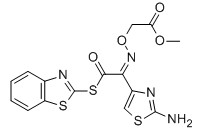
|
For Cefixime
|
EHATA
CAS No: 64485-82-1
Purity: ≥98%
|

|
For Ceftazidine
|
2-Chloroadenine
CAS No: 1839-18-5
|

|
For Cladribine, Fludarabine et al
|
Bicyclo(2,2,1)Heptane-2,3-di-exo-carboximide
CAS No: 14805o-29-9
|

|
For Lurasidne
|
(R,R)-1,2-Bis(methanesulfonyloxy methyl)Cyclohexane
CAS No: 186204-35-3
|

|
For Lurasidone
|
3-(Piperazin-1-yl)benzol[d] isothiazole
CAS No: 87691-87-0
|
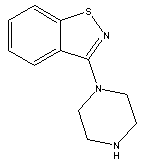
|
For Lurasidone
|
Trityl olmesartan
CAS No: 144690-92-6
Purity: ≥98%
|
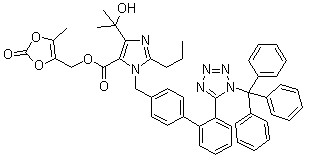
|
For olmesartan
|
3-Acetyl Pyridine
CAS No: 350-03-8
|

|
For Risedronate Sodium
|
3-(AceticAcid)pyridine HCL
CAS No: 6419-36-9
|

|
For Risedronate Sodium
|
Risedronic Acid
CAS No: 105462-24-6
|

|
For Risedronate Sodium
|
3-Hydroxy-1-adamantyl-D-Glycine
CAS No: 709031-29-8
|

|
For Saxagliptin
|
(1s,3s,5s)-3-(aminocarbonyl)-2-azabicyclo(3,1,0) hexane-2-carboxylic acid tert-butyl ester
CAS No: 361440-67-7
|

|
For Saxagliptin
|
(S)-N-Boc-3- hydroxy-adamantylglycine
CAS No: 361442-00-4
|
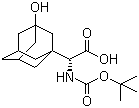
|
For Saxagliptin
|
2-Azabicyclo[3.1.0] hexane-3-carbonitrile, (1s,3s,5s)-
CAS No: 866083-42-3
|

|
For Saxagliptin
|
Ethyl 3-(pyridin-2-ylamino) propanoate
CAS No: 103041-38-9
|

|
For Dabigatran
|
N-(4-Cyanophenyl) glycine
CAS No: 42288-26-6
|
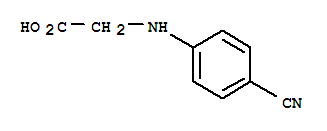
|
For Dabigatran
|
4-methylamino-3-nitrobenzoic Acid
CAS No: 41263-74-5
|

|
For Dabigatran
|
S-3-Amino-3-phenylpropanoic acid ethyl ester HCL
CAS No: 167834-24-4
|

|
For Dapoxetine
|
(S)-3-Amino-3-Phemylpropan -1-ol
CAS No: 82769-76-4
|
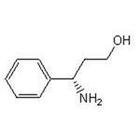
|
For Dapoxetine
|
(S)-3-Dimethylamino-3-Phemylpropanol
CAS No: 82769-75-3
|

|
For Dapoxetine
|
4-{4-[4-(hydroxydiphenylmethyl)-1-piperidinyl]-1-butynil}-α,α-dimethyl benzene acetic acid
CAS No: 832088-68-3
|
|
For Fexofenadine HCl
|
Methyl 2-(4-(4-chlorobutanoyl)phenyl)-2-methylpropanoate
CAS No:154477-54-0
|

|
For Fexofenadine HCl
|
5-Bromo-2-chlorophenyl)(4-ethoxyphenyl)methanone
CAS No 461432-22-4
|

|
For Dapagliflozin
|
4-(5-Bromo-2-chlorobenzyl)phenyl ethyl ether
CAS No :461432-23-5
|

|
For Dapagliflozin
|
APIs & Intermediates
Mica Ester,Pharma Intermediates,Ciprofloxacin Hcl Uses,Active Pharmaceutical Ingredients
NINGBO VOICE BIOCHEMIC CO. LTD , https://www.pharma-voice.com






















